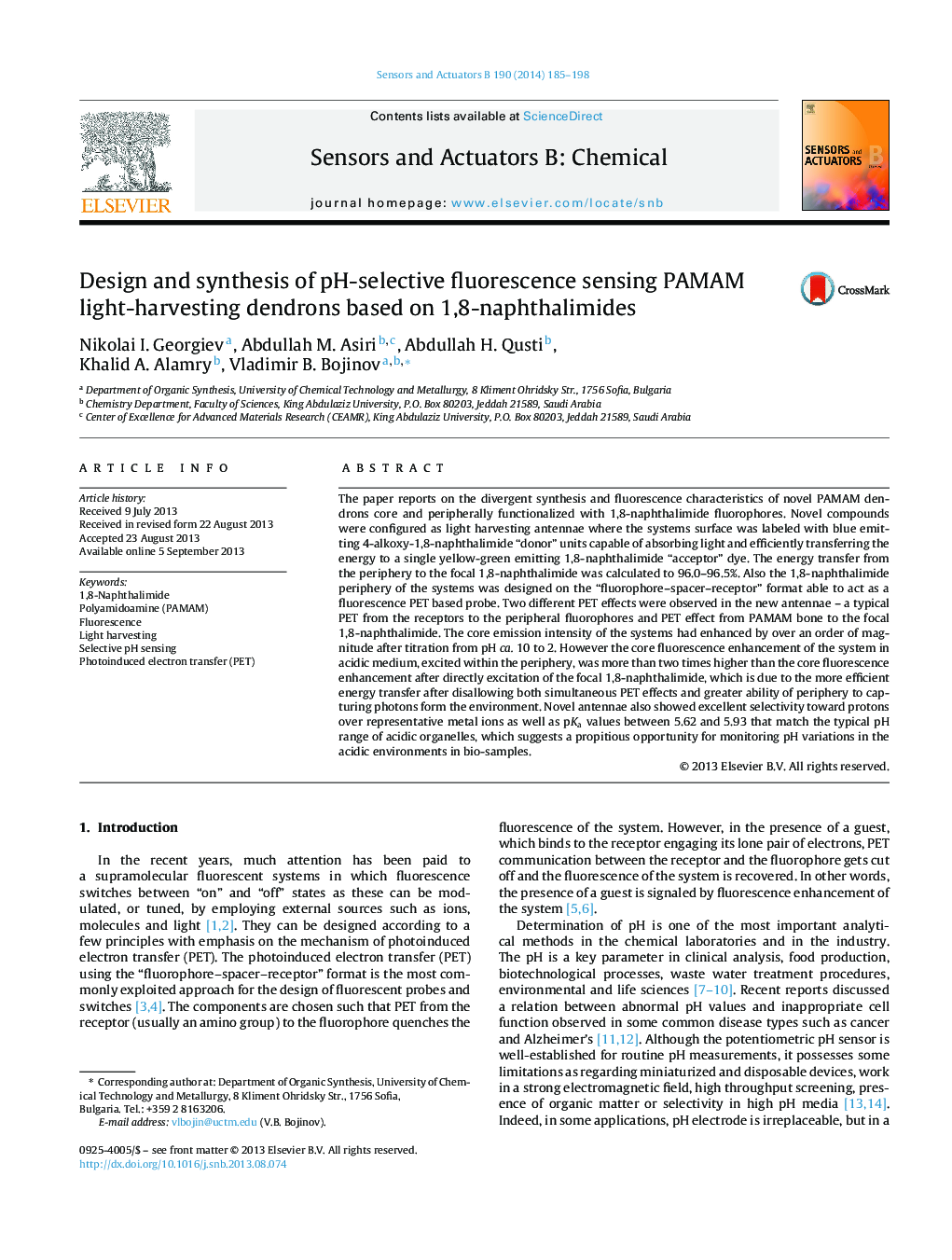| Article ID | Journal | Published Year | Pages | File Type |
|---|---|---|---|---|
| 7147626 | Sensors and Actuators B: Chemical | 2014 | 14 Pages |
Abstract
The paper reports on the divergent synthesis and fluorescence characteristics of novel PAMAM dendrons core and peripherally functionalized with 1,8-naphthalimide fluorophores. Novel compounds were configured as light harvesting antennae where the systems surface was labeled with blue emitting 4-alkoxy-1,8-naphthalimide “donor” units capable of absorbing light and efficiently transferring the energy to a single yellow-green emitting 1,8-naphthalimide “acceptor” dye. The energy transfer from the periphery to the focal 1,8-naphthalimide was calculated to 96.0-96.5%. Also the 1,8-naphthalimide periphery of the systems was designed on the “fluorophore-spacer-receptor” format able to act as a fluorescence PET based probe. Two different PET effects were observed in the new antennae - a typical PET from the receptors to the peripheral fluorophores and PET effect from PAMAM bone to the focal 1,8-naphthalimide. The core emission intensity of the systems had enhanced by over an order of magnitude after titration from pH ca. 10 to 2. However the core fluorescence enhancement of the system in acidic medium, excited within the periphery, was more than two times higher than the core fluorescence enhancement after directly excitation of the focal 1,8-naphthalimide, which is due to the more efficient energy transfer after disallowing both simultaneous PET effects and greater ability of periphery to capturing photons form the environment. Novel antennae also showed excellent selectivity toward protons over representative metal ions as well as pKa values between 5.62 and 5.93 that match the typical pH range of acidic organelles, which suggests a propitious opportunity for monitoring pH variations in the acidic environments in bio-samples.
Keywords
Related Topics
Physical Sciences and Engineering
Chemistry
Analytical Chemistry
Authors
Nikolai I. Georgiev, Abdullah M. Asiri, Abdullah H. Qusti, Khalid A. Alamry, Vladimir B. Bojinov,
